Second Annual Cardiovascular Health Policy Summit
May 20, 2019
Sandeep Jauhar’s grandfather was sitting down to lunch with family when he crumpled to the floor. Jeff Kwitowski’s father was on a routine bike ride. Cat Davis Ahmed’s father was enjoying a game of tennis. And Florence Champagne was in an office building when she dropped to her knees, gasping for air and praying for her life.
“The heart is the only organ that can kill you in a matter of minutes,” explained Dr. Jauhar, cardiologist, author and keynote speaker at the second annual Cardiovascular Health Policy Summit. Speakers’ recollections of family tragedy and near-death experiences gave credence to his comment. They also attached a sense of urgency to the day-long event’s message: Heart patients need timely, affordable access to appropriate care and medicine.

In his opening remarks, former U.S. Surgeon General Kenneth Moritsugu, MD, emphasized this point. “If we don’t have public policies that support and encourage access, we as health care professionals and advocates have failed our patients, and we will have failed our communities,” Dr. Moritsugu noted. He implored the audience to “keep the patient at the center” of advocacy and health care.
But as the summit audience of health care providers, patients, Capitol Hill staff and other stakeholders came to understand, heart patients face a growing set of challenges.
Rural Health Challenges
In a panel discussion titled, “Disparities in Rural America: Nurses’ View from the Front Lines,” Martha Biddle, PhD, of the University of Kentucky College of Nursing explained that her typical patient faces multiple co-morbidities – “four-to-five active disease processes for most patients,” Biddle described.
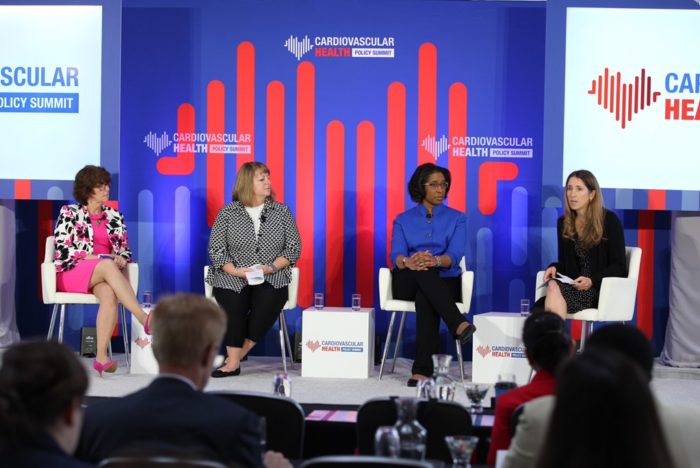
Rural isolation makes managing those conditions even harder. Biddle described patients driving one-two hours to see a cardiology specialist. And then there’s access to medicine itself. Eileen Handberg, PhD, of the University of Florida Health noted that some patients have 10 or more medications. Even a modest co-pay, $5 or $10 per medicine, can become unmanageable for these patients given the number of drugs they take.
Insurers’ prior authorizations can make access still more complicated. Panel moderator Kim Newlin, MSN, of the Preventive Cardiovascular Nurses Association quipped, “I didn’t go to school and learn how to get prior authorization.” Eileen Handberg explained that the bureaucratic process is just another layer of complexity in patients’ attempt to access prescribed medicine.
Policymakers are working to address rural health challenges, explained Cara James, PhD, of the Centers for Medicare & Medicaid Services. James described the agency’s efforts, which aim to improve the quality of rural health and the sustainability of rural hospital systems while also giving communities the autonomy to design a program that works best for them.
Access to Innovative Medicine
Rural or urban, patients who need innovative medicines like cholesterol-lowering PCSK9 inhibitors are fighting to get it – and not always with success. In a panel discussion titled, “Access Anguish: When is Enough Enough?,” Keith Ferdinand, MD, of the Association of Black Cardiologists reflected on insurance denials for at-risk patients who had not responded adequately to statins. It’s a “huge problem,” Dr. Ferdinand remarked, noting that for certain patients, “Just eating salmon and jogging ain’t going to do it.”

Delays in access can be dangerous, especially for patients who are born with a genetic predisposition to high cholesterol – a condition known as familial hypercholesterolemia, or FH. The condition defies stereotypes about high cholesterol, afflicting people who are otherwise healthy and active. Few understand the irony as well as Jeff Kwitowski, an FH patient who saw his father die at age 60 from a heart attack. “When I was 12 of 13, my cholesterol was already 400,” recalled Kwitowski, an avid runner. His daughter Cora also has inherited the disease and requires medication to lower her cholesterol.
Despite their risk, FH patients frequently face barriers to prescribed medicine. So explained Cat Davis Ahmed of the FH Foundation. Ahmed noted that 90% of FH patients go undiagnosed. Those who do receive a diagnosis and are then prescribed a PCSK9 inhibitor are “at the finish line almost,” Ahmed described, “Then they’re denied.”
Harry Gewanter, MD, of the Alliance for Transparent & Affordable Prescriptions explained that the “extremely opaque, extremely complex” drug supply chain is part of the problem. Pharmacy benefit managers, the middlemen who manage prescription drug benefits for major health plans, exacerbate the issue. PBMs may make coverage decisions based on what’s financially advantageous to them through the drug rebate system – even if those decisions complicate access for patients at risk of heart attack, stroke or death.
And while insurers have argued that rejections occurred because physicians prescribed the drugs to the wrong patients, data show otherwise. The Institute for Patient Access’ 2019 access report card reveals that even patients who have diagnosed FH, are already on a statin, or have already experienced a cardiovascular event are being denied at a rate of roughly one in three.
The issue came to a head recently when manufacturers of PCSK9 inhibitors slashed their prices by 60% — but patients saw no benefit. Dr. Gewanter speculated that the lure of a lucrative rebate led PBMs to stick with the higher price tag rather than adjust to the new list price and lower patients’ out-of-pocket burden.

Comorbidities introduce another layer of complexity to access challenges. Sarah Cassagrande, PhD, of Social & Scientific Systems, Inc. explained that the prevalence of diabetes has steadily risen in recent years, and people with diabetes having an increased risk of cardiovascular disease and stroke. Despite their risk, however, more people are not getting the care they need, “missing important points of contact with physicians, which can result in more comorbidities.”
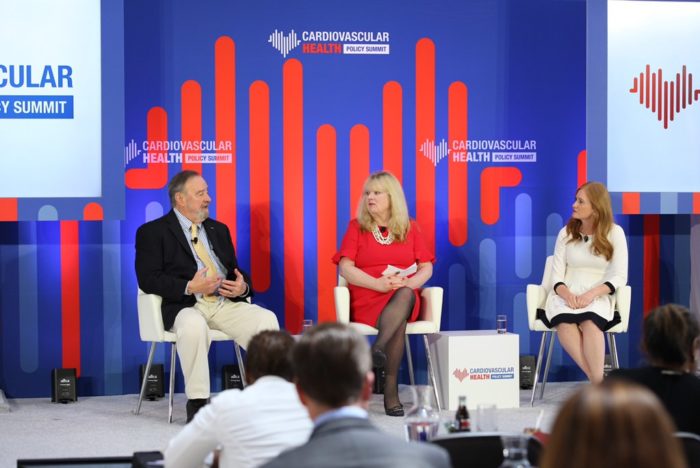
Perhaps that’s because the burden of navigating the health care system’s complexities rests almost solely with the patient. “You go to two different doctors, and you’re the person who has to coordinate,” explained Connie Newlon of WomenHeart, who at 47 years old has undergone quadruple bypass and continues to deal with a family history of heart disease as well as comorbid conditions. The frustration resonated with Jim Barton of Mended Hearts, who explained that his cardiologist felt pressed for time, further increasing the pressure on patient and provider alike.
Emotion, Stress & the Human Heart
The stress of getting cardiovascular care isn’t just irksome; it may also be unhealthy. In his keynote address to the summit audience, New York Times bestselling author and cardiologist Sandeep Jauhar, MD, described the interconnection between the physiological heart and the metaphorical one. Highly stressful events such as the loss of a spouse or sibling can actually trigger a physical change in the shape of the heart organ, Dr. Jauhar explained.
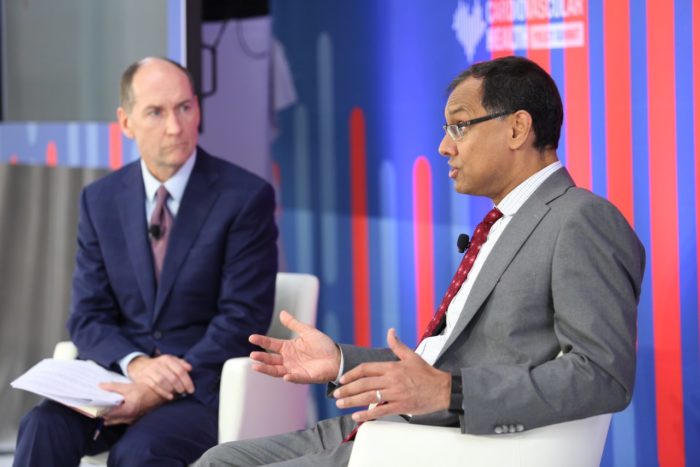
Dr. Jauhar, himself a heart patient with a family history of cardiovascular events, explained that emotional well-being can influence heart health. Research suggests that stress management may be even more strongly correlated with artery disease than exercise, Dr. Jauhar explained, while patients who are depressed after heart attack are more likely to die than those who are not. “The emotional heart affects its biological counterpart in surprising and mysterious ways,” Dr. Jauhar summarized.
The Diabetes-Cardiovascular Connection
As the day’s final panel conveyed, at least one way to minimize stress for heart patients may be to offer a more holistic, team-based approach to caring for patients with both diabetes and cardiovascular disease. “This is a huge issue, a multifaceted issue,” explained Alyssa Pressley, of the American Heart Association. The organization recently launched a “Know Diabetes by Heart” campaign to raise awareness about the connection between the two conditions.
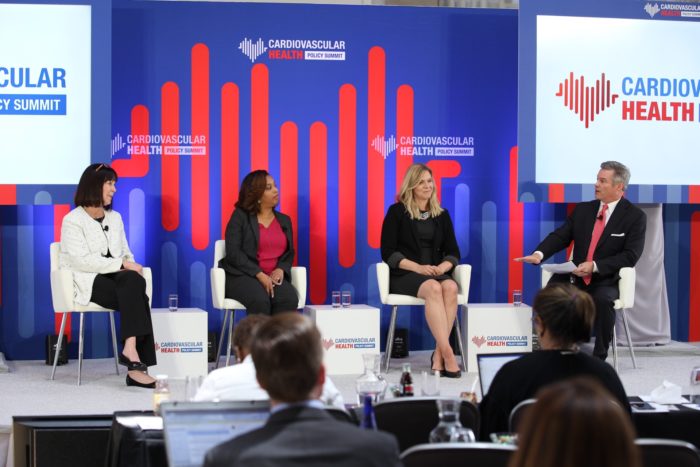
Nancy D’Hondt, RPh, CDE, of the American Association of Diabetes Educators emphasized the importance of working to empower people with diabetes to better understand and manage their disease. But for some regions this is a tall order. Robin Diggs Outlaw, MPH, of the District of Columbia Department of Health described the “staggering” rates of diabetes seen in DC, where African American residents are three-four times more likely than other residents to have diabetes.
The group emphasized the value of evidence-based self-management programs, diabetes education, lifestyle changes for patients. But they also noted the growing importance of medications that carry cardiovascular benefit in addition to treating diabetes.

The event closed with remarks from Nick Morse of the American College of Cardiology. Morse reiterated the day’s themes of access and advocacy, urging participants to continue conveying the voice of patients to policymakers and to put the day’s sentiments into action. The second annual cardiovascular health policy summit was convened by the Institute for Patient Access and hosted by the Alliance for Patient Access and the Partnership to Advance Cardiovascular Health. See more from the day’s proceedings with #CardioSummit2019.
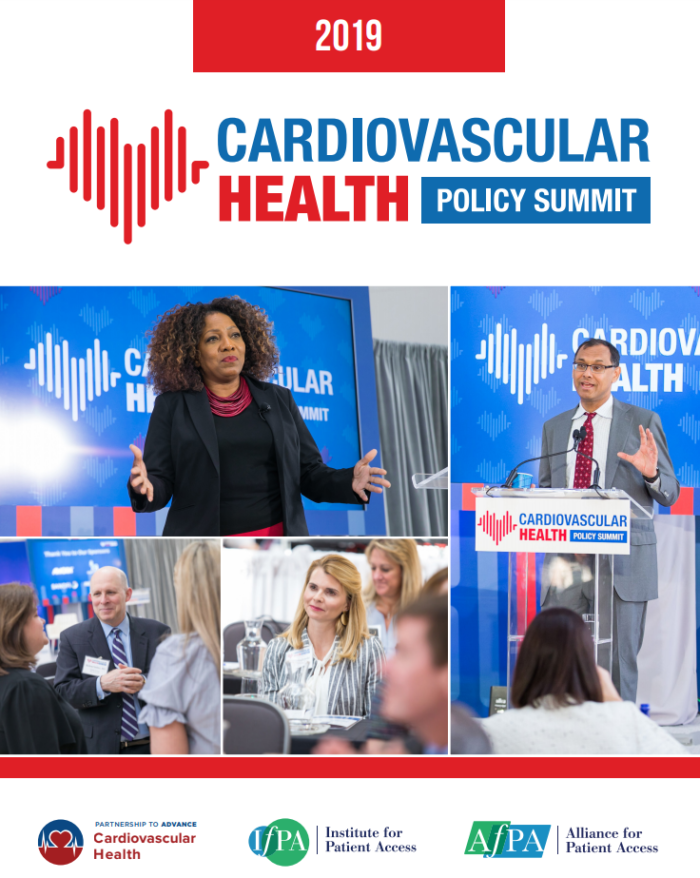
Categorized in: Summits

